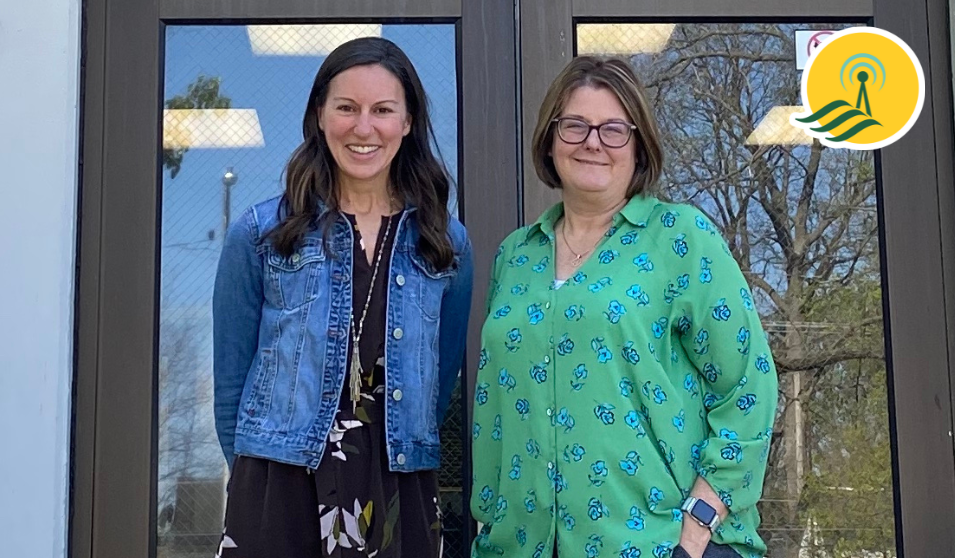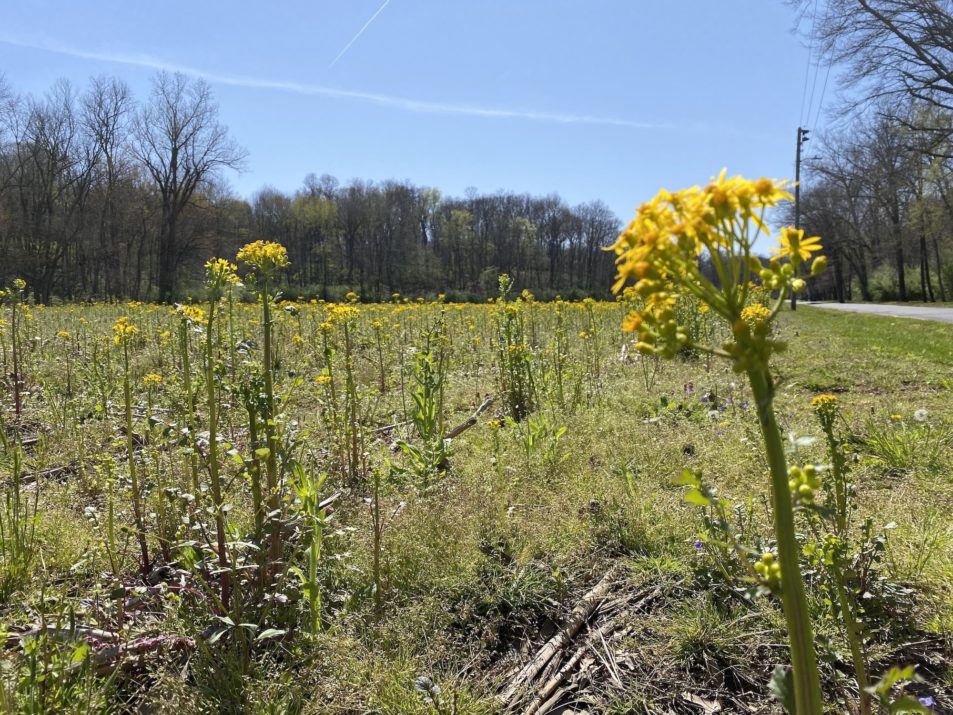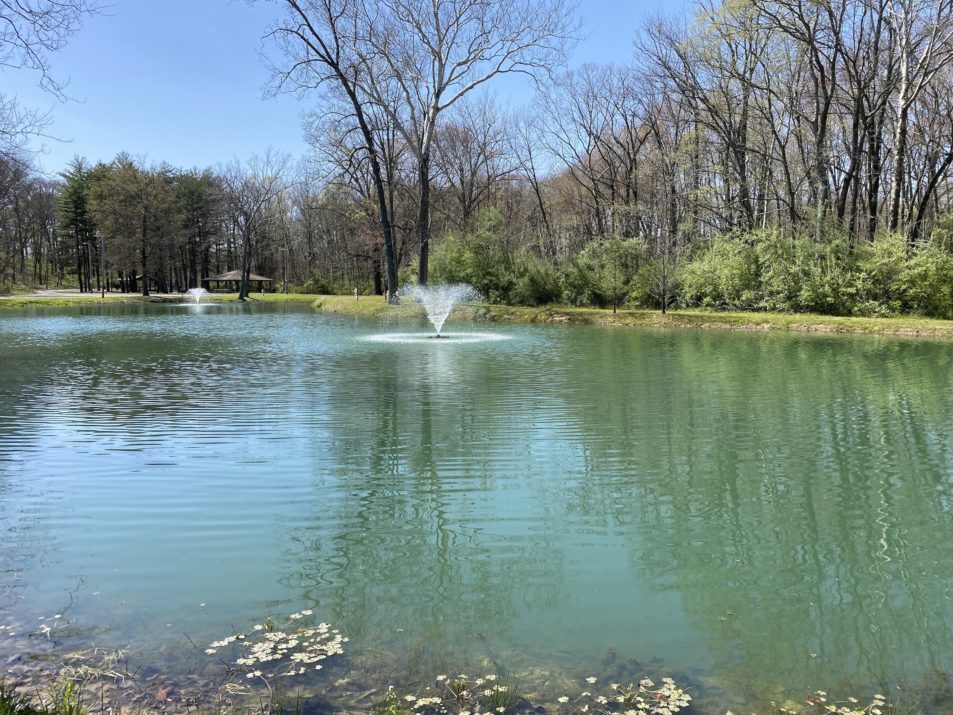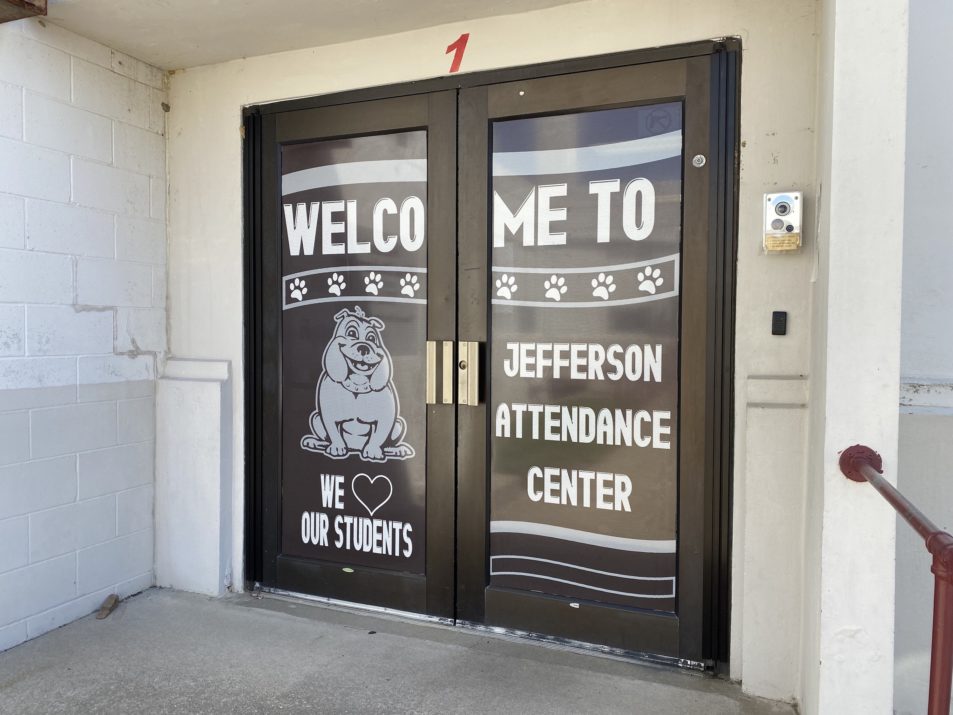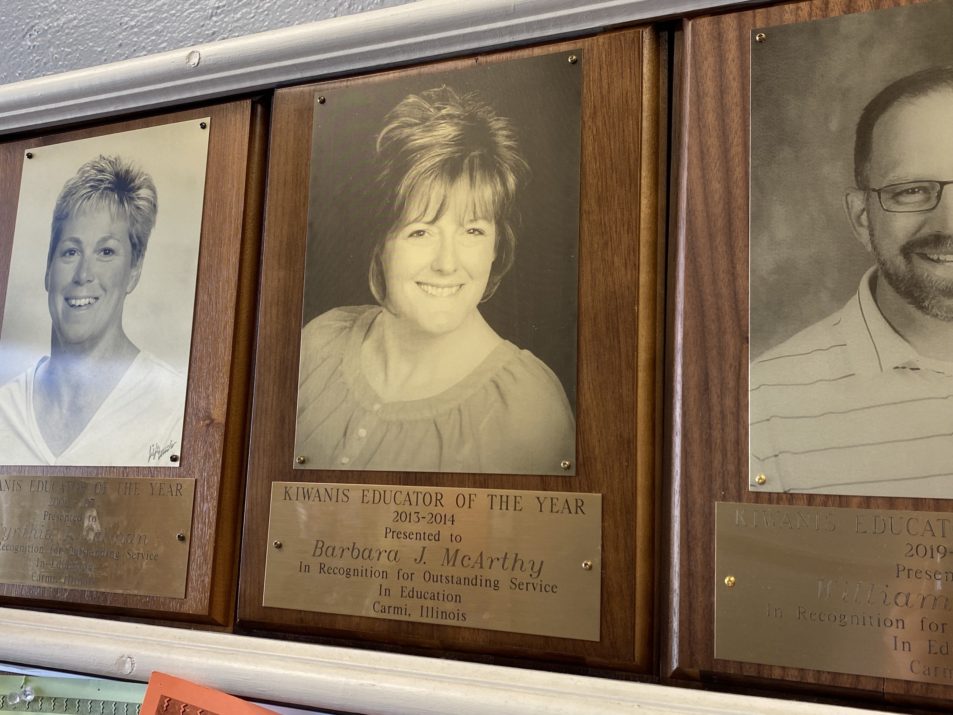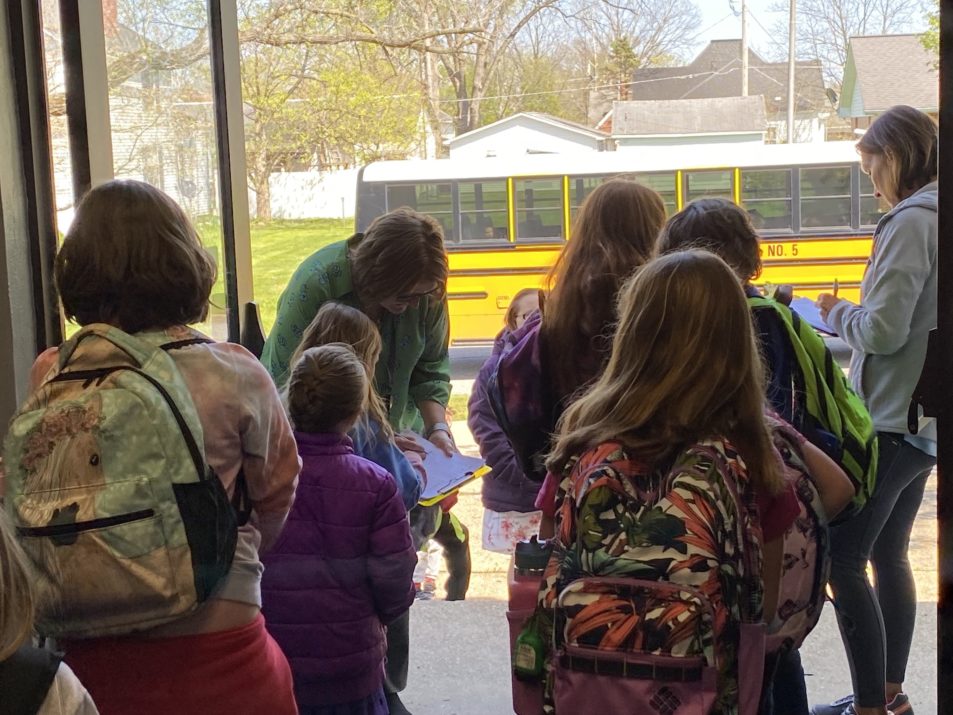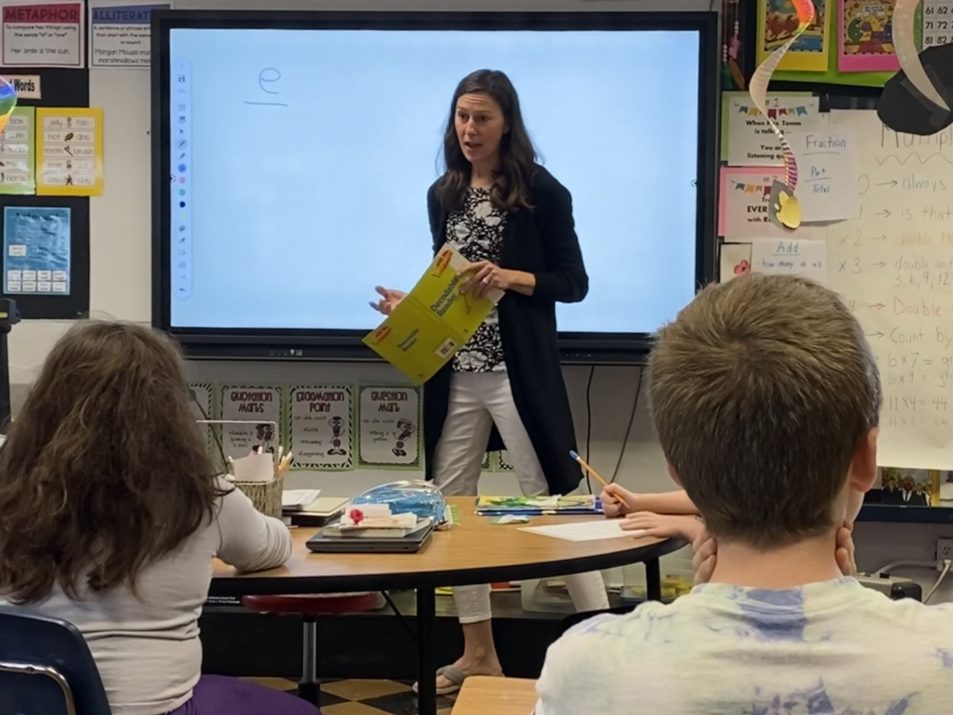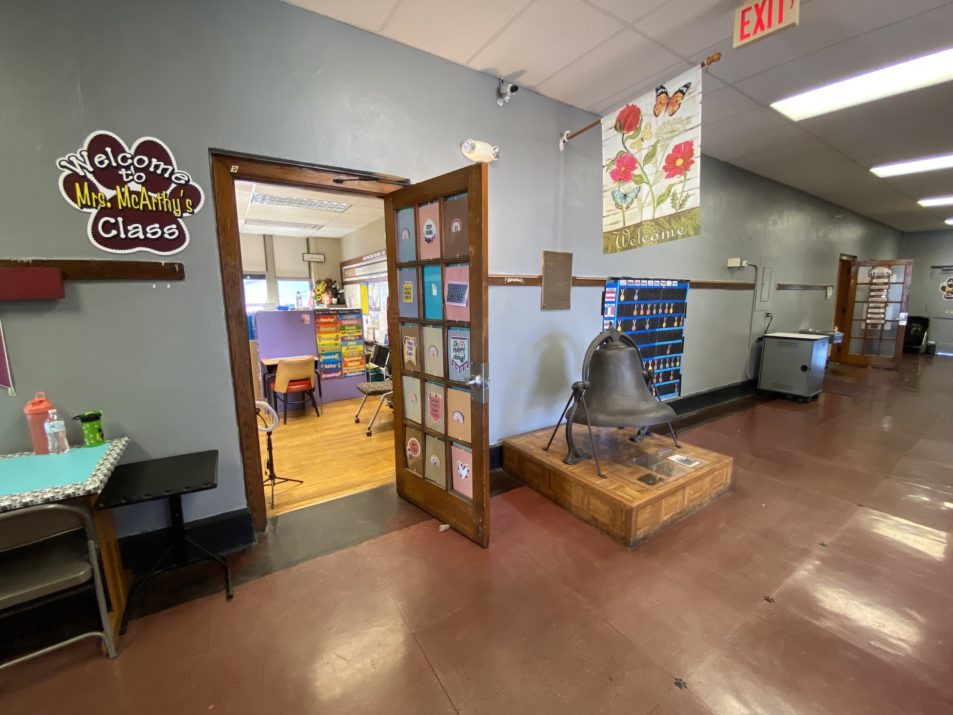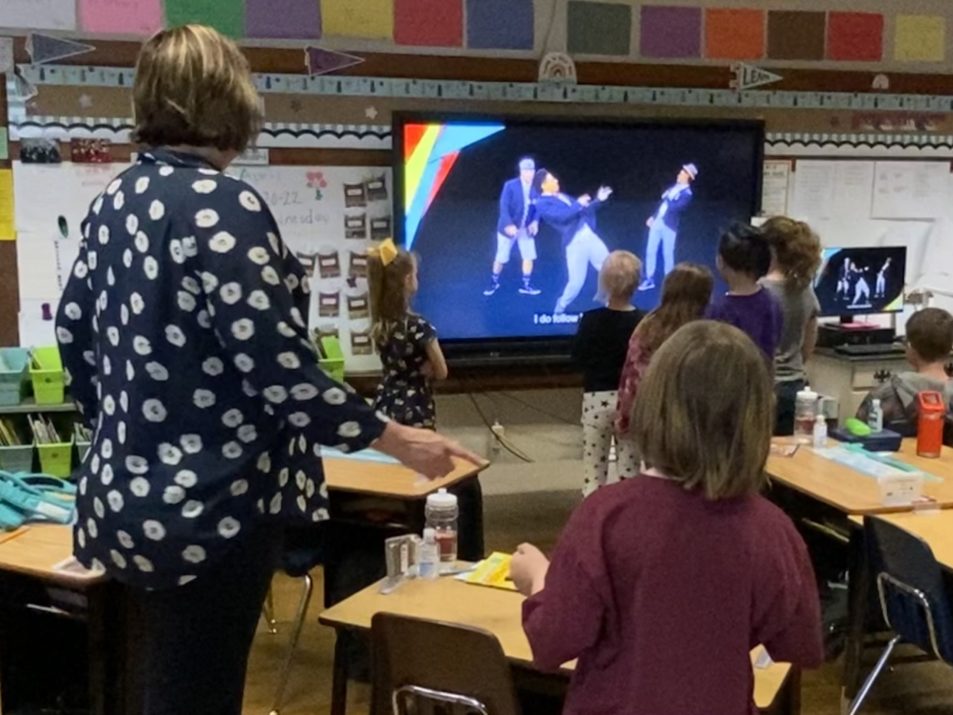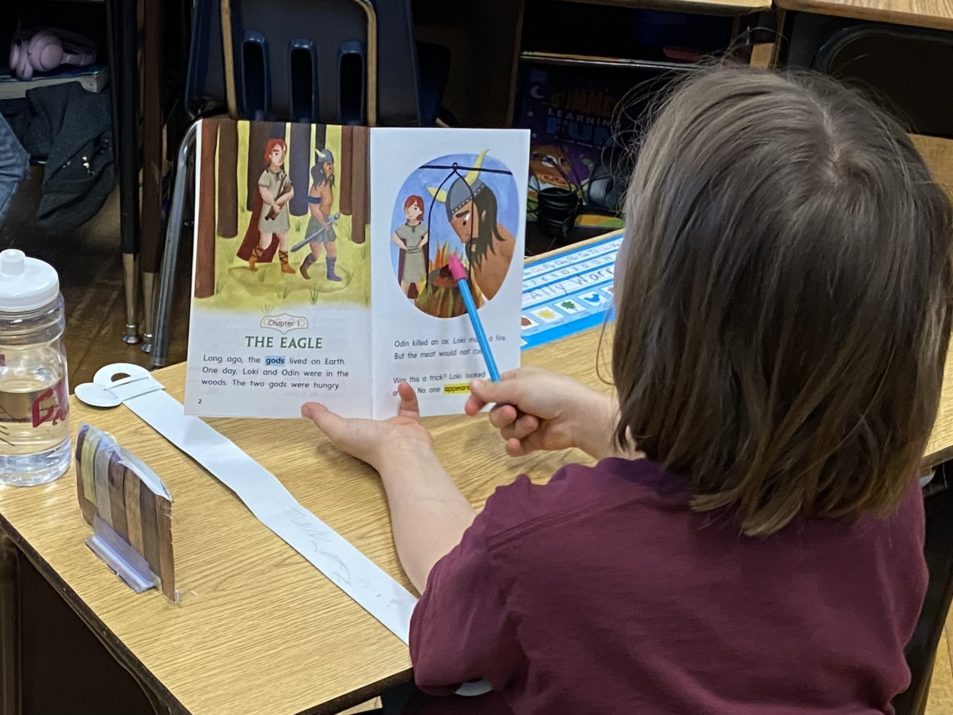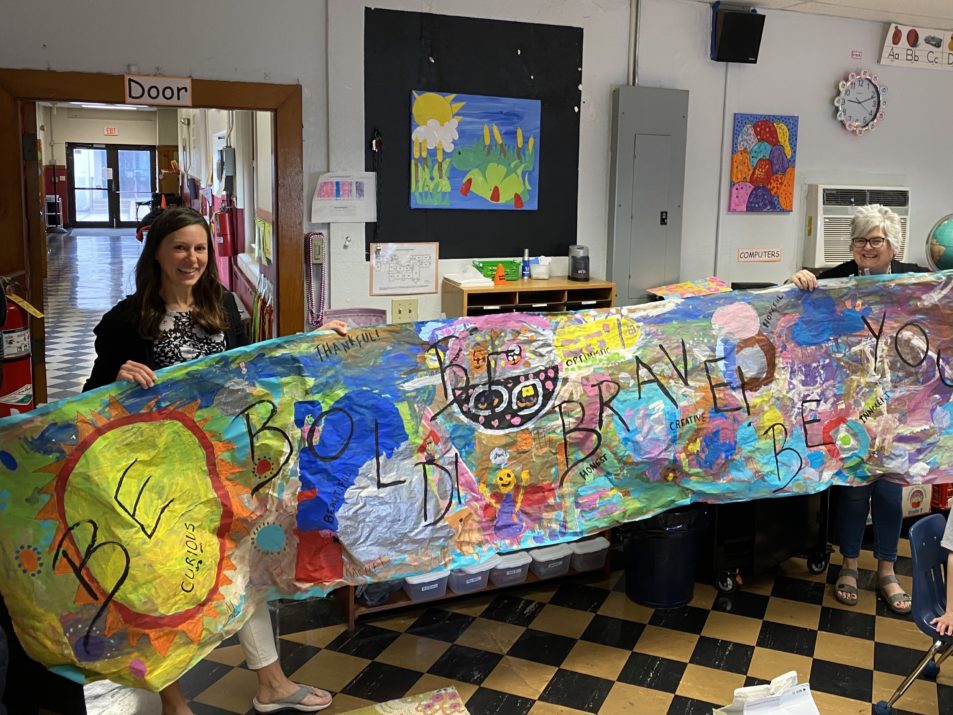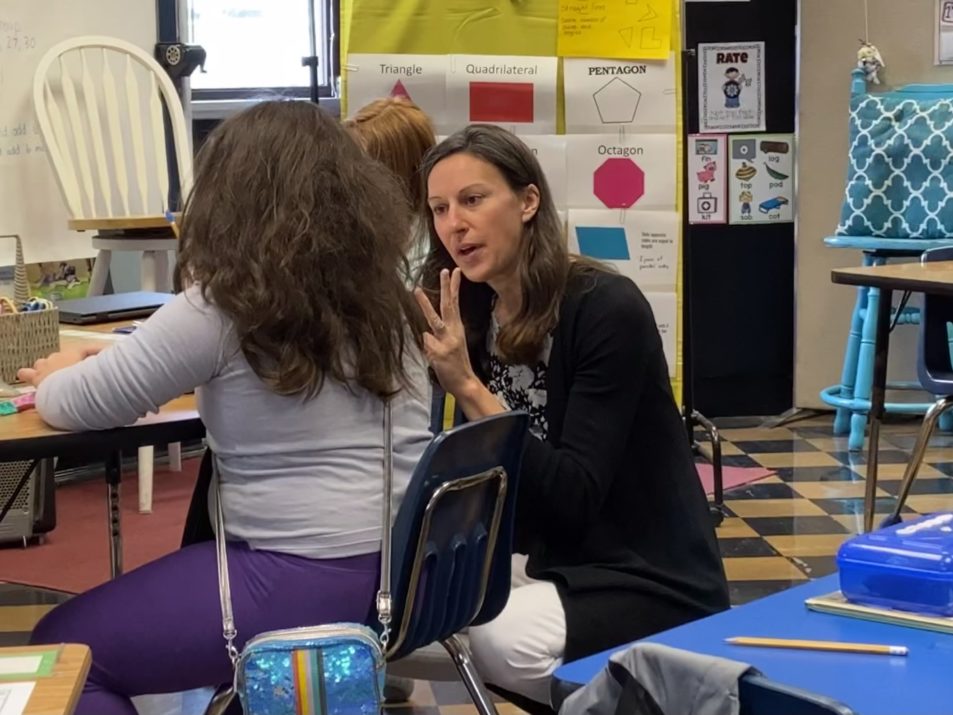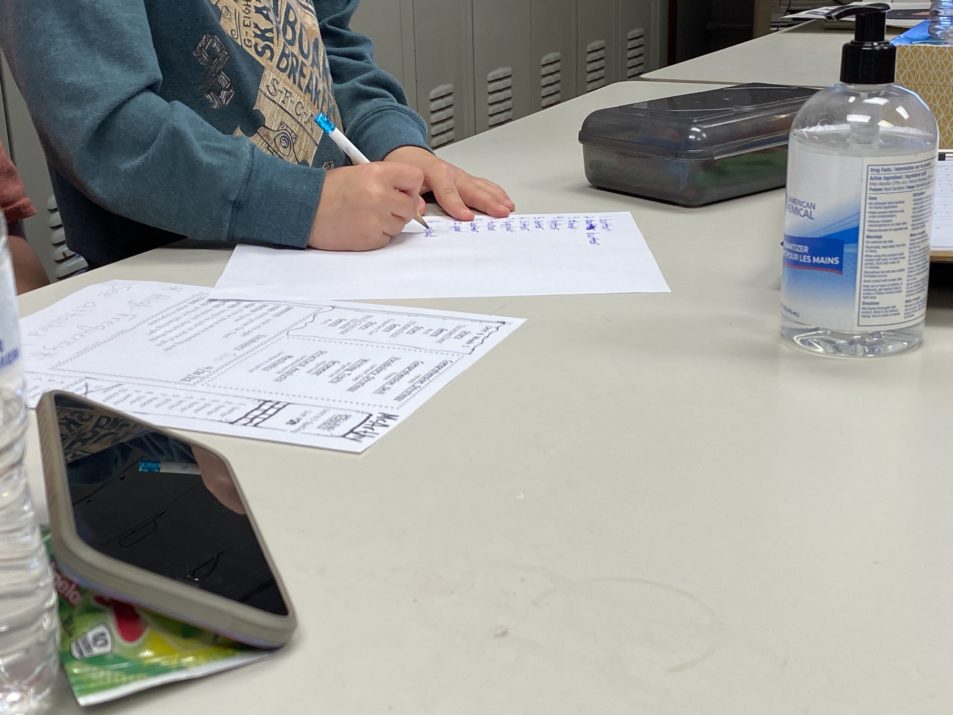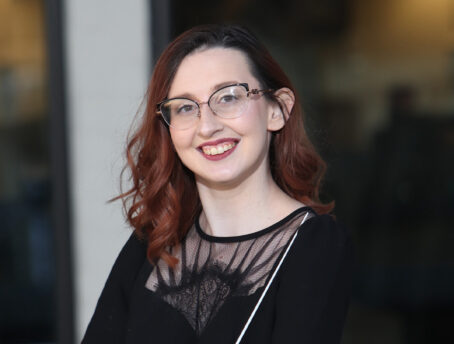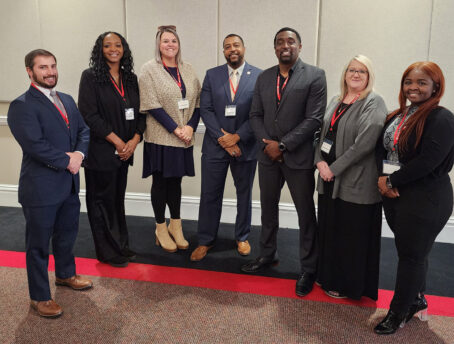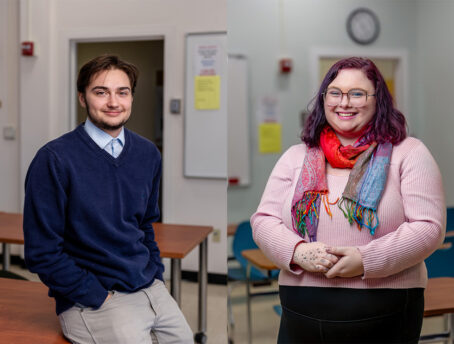Listen to the podcast here:
You can also find our podcast on Apple Podcasts, Stitcher, Google Podcasts and Spotify.
Written version:
Working in the public school system presents a unique set of challenges, especially in rural places, and certainly when it comes to special education. In this episode, we visited veteran educators Barbara (Barb) McArthy and Suzy Tomm on-site in their classrooms in Carmi, Illinois, to discuss how teaching in a rural place impacts their ability to meet the needs of their students.
Carmi is a small town of about 5,300 people nestled in the southern Illinois tri-state area. Barb and Suzy live and work in this rural farming community, and like many rural teachers, they attended school there as well. However, they each had different paths back to Carmi-White County. Barb explained that seeing her own children go through school inspired her to work as a teacher, but there was no doubt that she would do it at home.
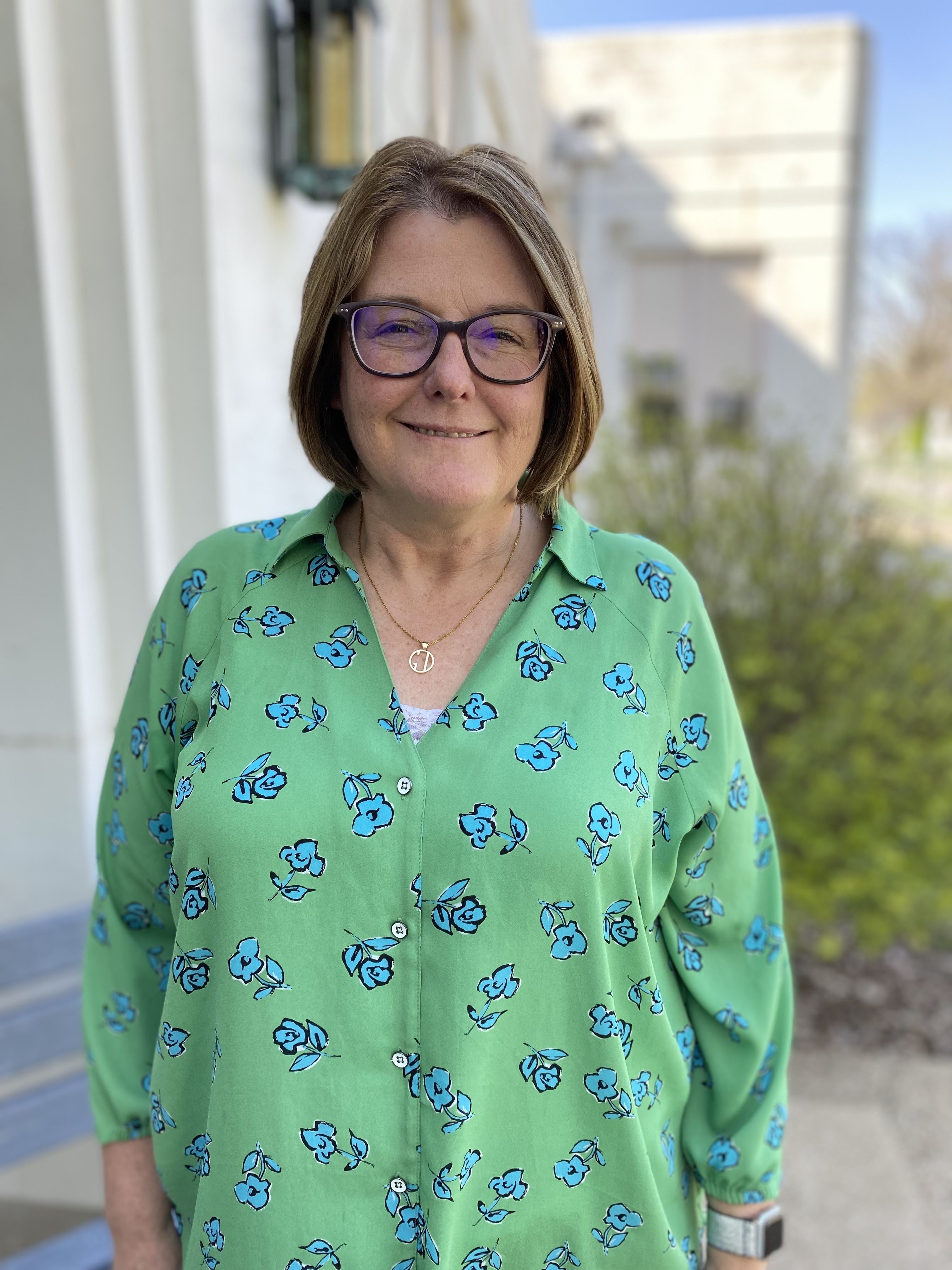
Barb: My parents are both from White County. We lived all over the country, because my dad worked for an oil company, but when I was in the sixth grade we moved back to White County and I went to Carmi schools. I got married young and started my family, and then went back to college as a non-traditional student, and then I started teaching. I taught one year at Harrisburg. One year at Harrisburg let me know that I needed to come on home to White County and so I - this is - just done my 29th year of teaching, and so 28 of those have been in the Carmi school system.
Suzy also felt inspired by the work she did with children in her community, joining the profession as a second-career teacher.
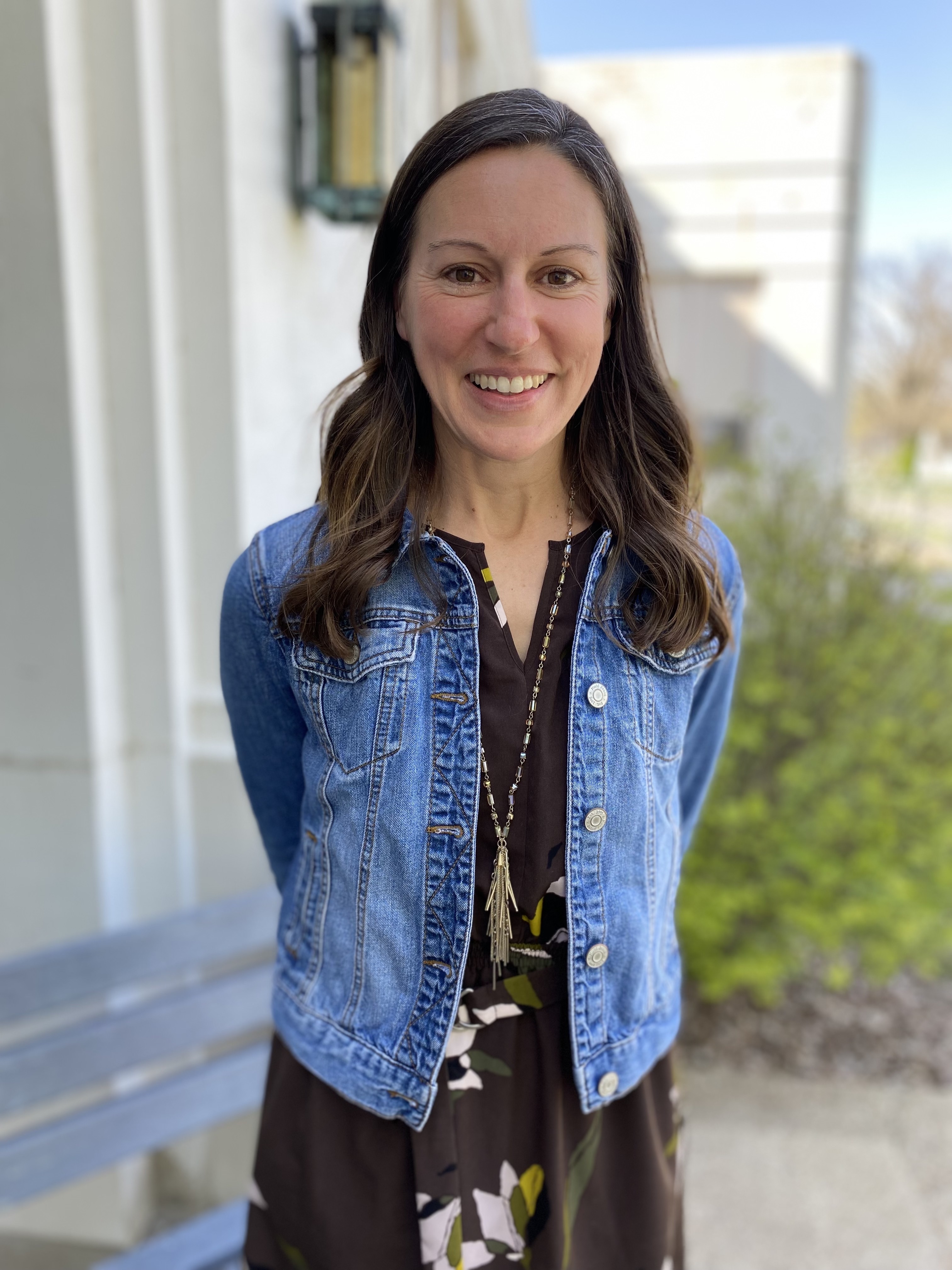
Suzy: So I grew up in Carmi, and after high school I went to college up at U of I and I actually got a degree in Ag Business and worked for Syngenta, Pioneer. And then, It was really through our church there that I realized I want to work with kids all day long. So I quit my job, went back and got my teaching degree, and my first job was in Lovington, which is up north, and then we decided that we wanted to move back down here. My family farms and we decided that's what we wanted to do, was move back to the farm, my husband farms. And I got a job at Grayville for a couple years, and then Carmi hired me. And I've been at Carmi now, I think, six years.
The Carmi school system is made of several attendance centers for children in specific age groups. Barb and Suzy work at Jefferson Attendance Center, which serves the second- and third-grade students of White County. For a time, Barb also worked as an aide at Brownsville Attendance Center, which is a central location for rural students with more challenging education needs.
Barb and Suzy know that there can be some misconceptions of what special education looks like and who it’s for. They explain the definition of special education and what rights students have by law, as well as what that looks like in practice.
B: And special education is IDEA, the Individuals with Disabilities Education Act. And now children have the right to FAPE, F.A.P.E., a Free Appropriate Public Education. And then they just have all of these safeguards that come under having an IEP, an Individualized Education Program, which is a legal and binding document that ensures that students receive the services, that is not going to give them an optimal education, but at least level the playing field some and make it where they can benefit from a Free Appropriate Public Education.
S: That's a perfect legal description of it and then, you know, to apply it in the classroom, you know, we get kids who, ranging in ability levels from autism to emotional disability, physical limitations, or medical limitations that, you know, even as a teacher we have to try to accommodate and work with. You know, it can be a challenge to try to teach at all these different levels in one classroom. You really have to individualize every Educational Program to make sure that kid gets what they need in order to succeed.
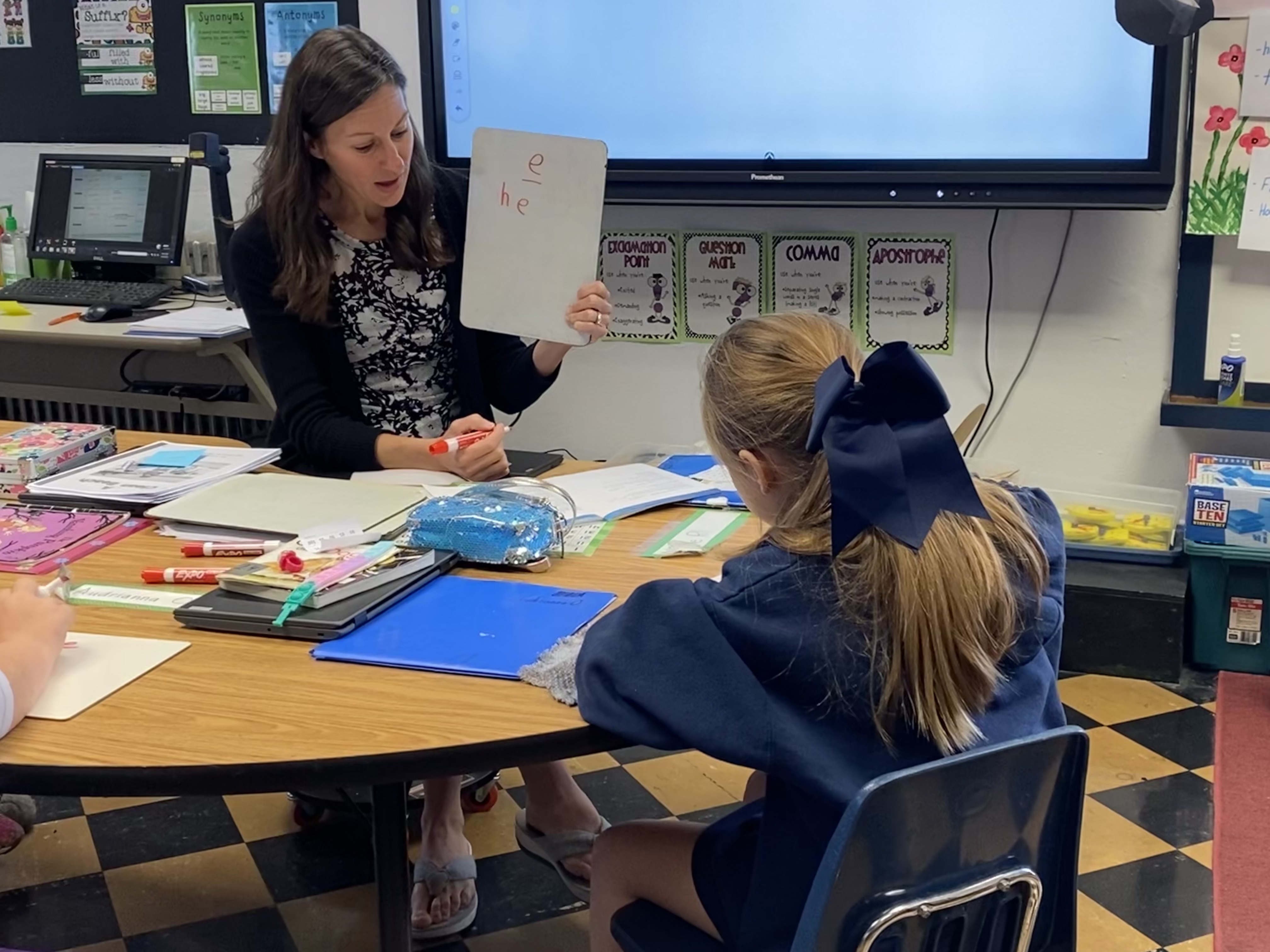
Aside from specific needs outlined in IEPs, Barb and Suzy support students in any way they can, whether that’s in the classroom or at home. Especially with students going hybrid or fully remote over the past couple of years, they’ve had to act nimbly to meet those additional needs.
B: Whenever we first went remote, it was, I think we were all in shock at first because it was so abrupt. But what amazed me was how fast this small community -
S: Oh, yeah.
B: - came together and started feeding kids. We all started making sure they had lunch. So they called and they said, “what are you worried about?” And the two of us said, “food! we're worried about food! These kids get two meals a day at school. How are their families going to feed them?” we went out on a tuesday and on wednesday or thursday we were feeding kids -
B: Sack lunches, yeah.
B: - sack lunches and breakfast.
S: for the academic portion we're scrambling. How do we get these packets put together? We've been told they're going to be out for two weeks so we're getting paper/pencil.
B: We tried to figure out who needed Chromebooks, and so I was able, because I had a set of Chromebooks just for my room -
Suzy: Yeah.
B: - that I was able to send, for those who had wi-fi, so we learned to do Zoom.
S: And then when school started that next year and they offered a remote learning option, we both had a handful of kids that took that route, so both Barb and I, we had a classroom in-person and then we were also managing another classroom remotely. so it was a steep learning curve. I did the Google Classroom route, watched a bunch of youtube videos, self-taught, and just -
B: Because she's way younger than me -
S: No!
B: - and I did the Zoom! I did, and then the Google Meets.
S: Google Classroom is kind of a fun little tool to use and I still use it because I think obviously our kids are on the track that it's just a technology driven society so they need to learn how to do work remotely. The silver lining was we all learned how to do that really quickly together.
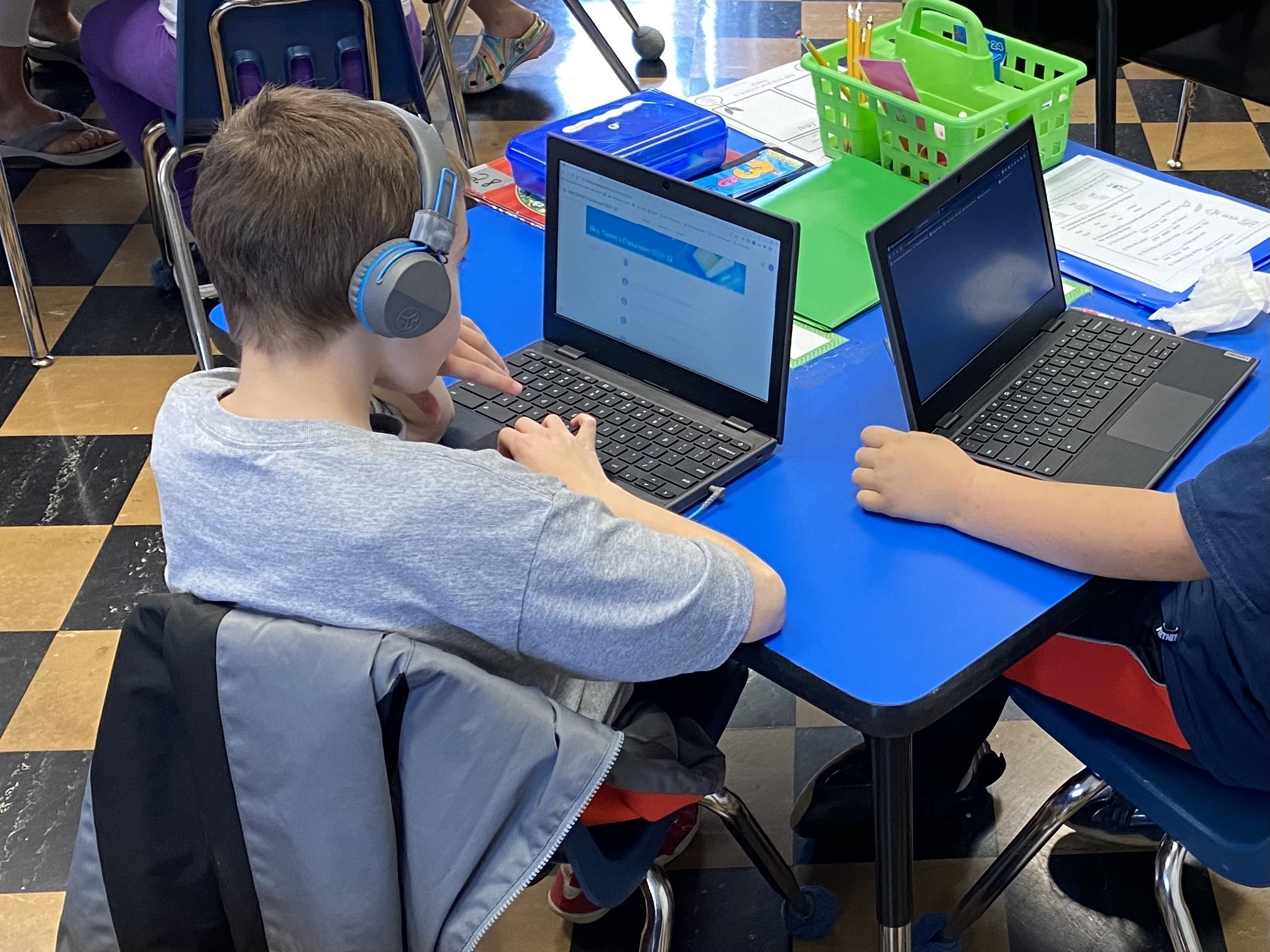
Barb and Suzy admit that there are some challenges to getting students the support they need, such as a lack of early intervention and the rural teacher shortage, which doubly impacts the field of special education, but working together as a team has helped them support their students and each other to the best of their abilities. They emphasized the importance of stability in the home, especially for special education students, and about how their rural community makes it possible for teachers to more easily connect with families to ensure the success of every student.
B: Every once in a while we'll have a year where we have maybe 10 to 12 kids, but most of the time we really do have 15 or more students. Our class sizes are not small, but what I do find is, working in this rural setting where I know everybody, I'm able to make connections with almost every family. Every family. My co-workers are good. So good to do what needs to be done for these students because I don't hear that, “it's not fair, my other kids don't get this,” because they know if life was fair we wouldn’t need special education, so.
S: Yeah, and like what Mrs. McArthy said, I think education starts in the home, and then we do what we can to support that and build on it. And when you miss that early intervention piece, by the time they get to kindergarten they're so far behind, so that's developmental delay which is a lot of what we see. So our job is to try to get them caught up really quickly and the best we can to help them succeed because once they leave Jefferson and onto fourth, fifth, sixth, you know, into junior high and high school, it just compounds. their delay compounds so -
B: The gap gets bigger.
S: Yes. So the early grades, early intervention is just so crucial to get these little kiddos ready to go on to higher grades and into the real world. And like you said, in a rural community, luckily we know a lot of those families. Especially Mrs. McArthy, she -
B: I’ve been around a while.
S: Generational!
B: Right, so I have kids and grandkids, so.
S: - and then she fills me in on different families and situations, and knowing that background can really help you in the classroom because you're like, “oh it makes sense now why this student is struggling with this or with that.” So I think a rural community, we're at an advantage for that because we know our kids and our families so well.
Barb and Suzy also shared how community members get involved with learning - including older students who want to become educators themselves. As a graduate of an Illinois Grow Your Own program, Barb in particular loves to encourage others to get involved with the profession, but both educators shared the positive impact these older students have in their classrooms.
B: They're high school seniors who choose this as an elective, to come and work in a classroom. So the one I had several years ago, her mother was the classroom aide, and then the one I have this year is my nephew. he will pull the kids one-on-one and do Accelerated Reader with them because they love to read their books to Mr. Jason, and he's picked up very well on knowing if they're ready to take an AR test or not, or if they've picked the wrong level. He’ll say, “This was way too easy!” or, “This is too hard.” and then he's also part of the national honor society and he is coming tomorrow to teach all day in my classroom and my students are beside themselves -
Suzy: Oh my goodness.
B: - with excitement.
S: And the kids just love working with a high school student.
B: They do!
S: And he's a male and I love having a positive male role model in my classroom because especially this demographic of kiddos don't always have that positive male role model. last year the mentor that I had, she was going into elementary education, so I mean that just gave her one more little snippet of experience before she went on into college to do her education degree, so it works both ways to help both of them out
B: It does.
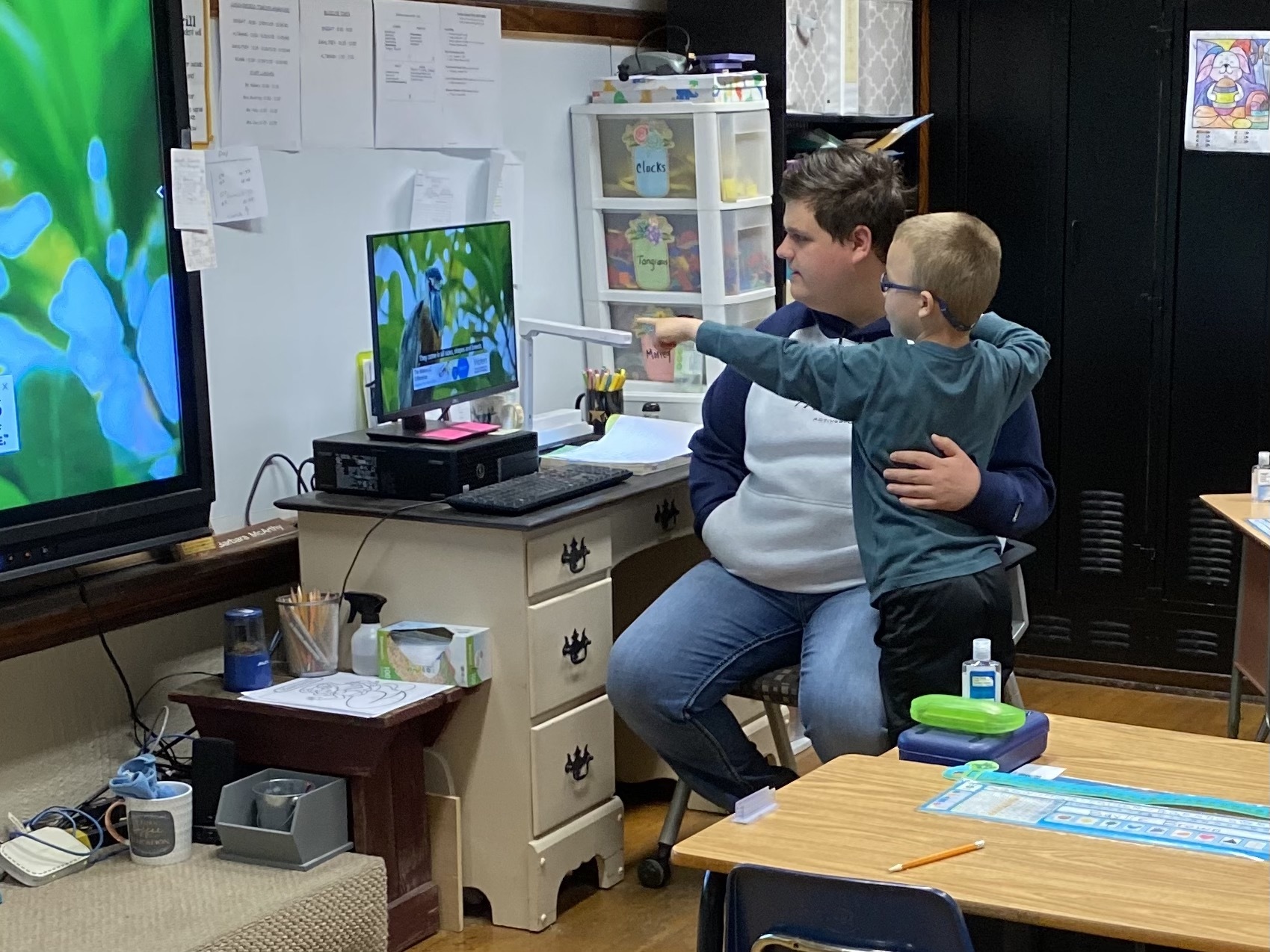
One aspect of Carmi living that Barb and Suzy love bringing into their classroom is agriculture. As a farming community, the schools look to get kids connected to their place and understand where their food comes from. As well, how they can participate in the community as they grow up.
B: We get to do the barnyard.
S: Yes, barnyard.
B: Our FFA advisor, he's pretty awesome.
S: He's her brother.
B: He's my brother, so anyway, another part of being in a small community! So the kids bring in lawn mowers, four wheelers, side by sides…
S: When I was in high school I rode my horse all the way to town because we didn't have a trailer. I rode my horse to town!
B: Right! they bring horses, they bring horses, cows, rabbits, pigs, chickens, could be ducks, and they bring farm equipment.
S: It gets kids so excited because a kid does not have to live on a farm to be part of that farm community. So to introduce that to them and get their minds spinning is fantastic.
B: And we have Ag in the Classroom.
S: Yes.
B: Wayne County and White County have gone together to pay for an educator that comes and does science-based, what we would call STEM lessons, for kids who have no idea where their food comes from
S: Yes.
B: Even a rural community, there are still kids who think that their food comes from -
Both: Walmart.
B: One of our one of our vocabulary words this week in second grade ELA is crops, so we were able to talk about crops and they immediately were like, “Oh, yeah!” because we learned about that in Ag in the Classroom.
The work that Barb and Suzy do requires tremendous patience and incredible care, which can lead to an exhaustion many teachers are familiar with. Rural Schools Collaborative is dedicated to creating a space for teachers to share ideas and resources to combat this burnout, especially for those early in their career, so we asked Barb and Suzy to share any advice they might have for other teachers dealing with these difficulties, as well as how others could best support educators in their roles.
S: I pray a lot.
B: We do too, I do too.
S: and just communicate with one another. I think when you talk about those issues and what you're struggling with that really helps because sometimes you can start to feel like, “oh my gosh i'm in this all by myself and i'm the only one feeling this way,” but you start to open up, you realize you're not the only one struggling. like, other people have those same you know concerns or or -
B: Yeah, sharing the burden. We have great administrators.
S: Oh, yes.
B: And so when we can say, “I'm struggling,” I do not feel that they're going to be judgmental to me like, “Well, you're a bad teacher.” No! They're going to say, “What can we do to help?” Hits the door every single morning and says, “Good morning Mrs. McArthy.” Greets everyone in the room. “Is there anything you need today? What can I do to help? You don't hesitate to let me know.” And that has not always been how it was when I've taught over the 29 years, but I think the fact that there aren't as many of us out there as there used to be, that we are maybe a more precious commodity than we used to be, and I just feel a little more valued. A little more…but I feel very supported.
S: Oh, yeah. I've worked in three different districts, and every district was a rural district, and I would say every district had that amazing support. So rural areas just seem to have those great administrators who truly care because they're from here, they want their community to thrive, and the only way it's going to thrive is if these kids get what they need at this age. We have IEP meetings, every student has a meeting once a year where the team sits down and includes their parents. And countless number of meetings, the parent just is so complimentary of Jefferson School. They say, you know, “So-and-so, they love coming to school every day.” And I mean, I really, I love to hear that because it takes a whole building to make those kids feel welcome and I think that we have that here.
B: Mmhmm, I do too.
Suzy: My name is Suzy Tomm .
Barb: And I'm Barbara McArthy.
Both: And I am a rural teacher.
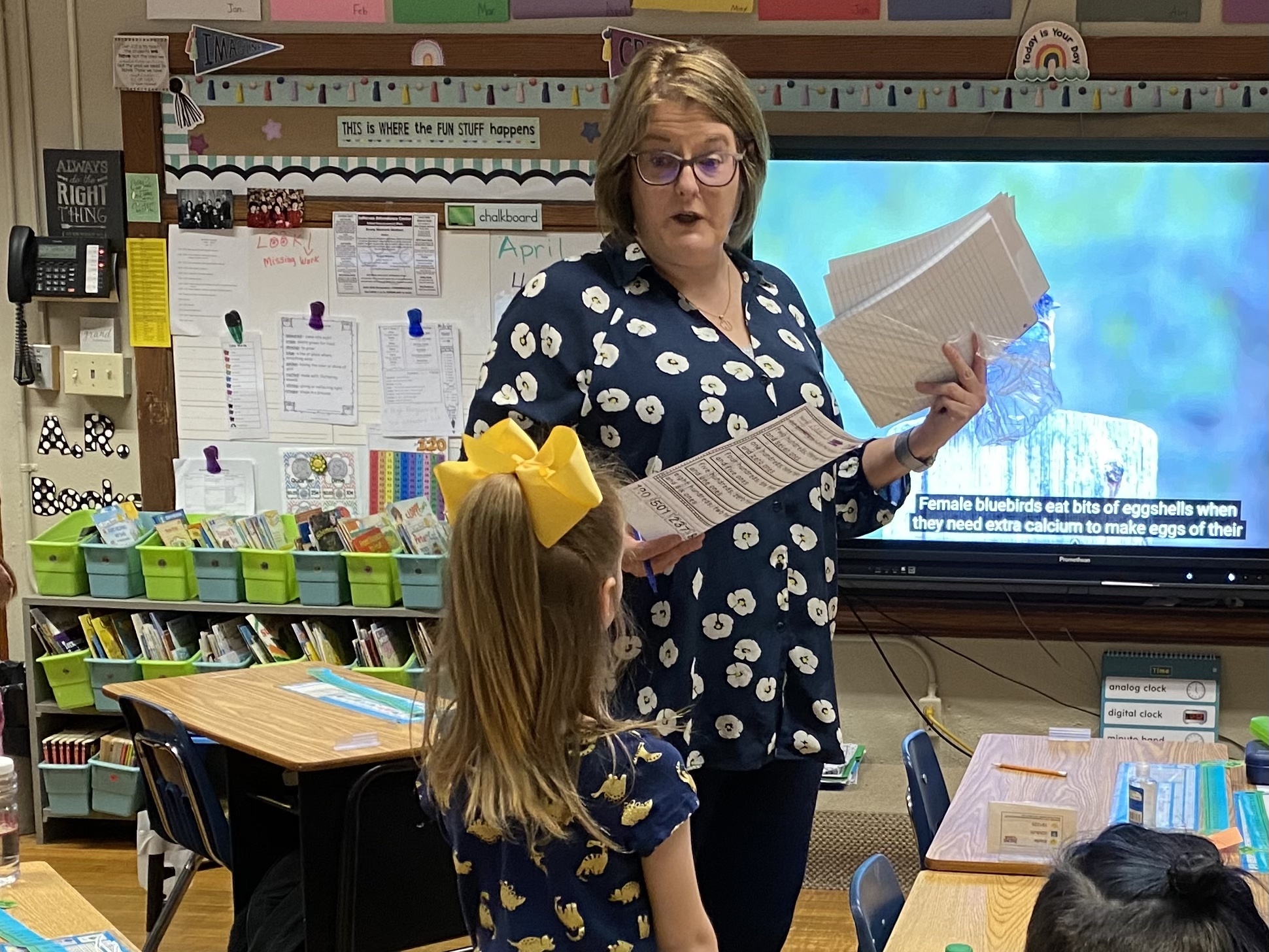
Thank you for engaging with this episode of the I Am A Rural Teacher Podcast. We’d like to thank our partners at our Illinois Regional Hub and the National Rural Education Association for collaborating with us on this episode. The I Am a Rural Teacher campaign is made possible by a grant from The Bill & Melinda Gates Foundation.

